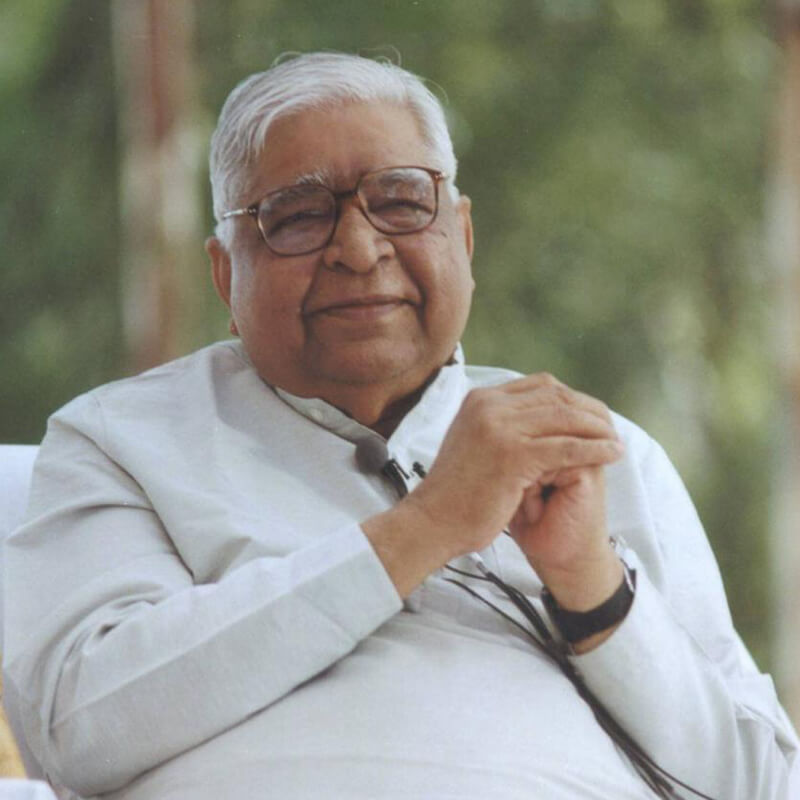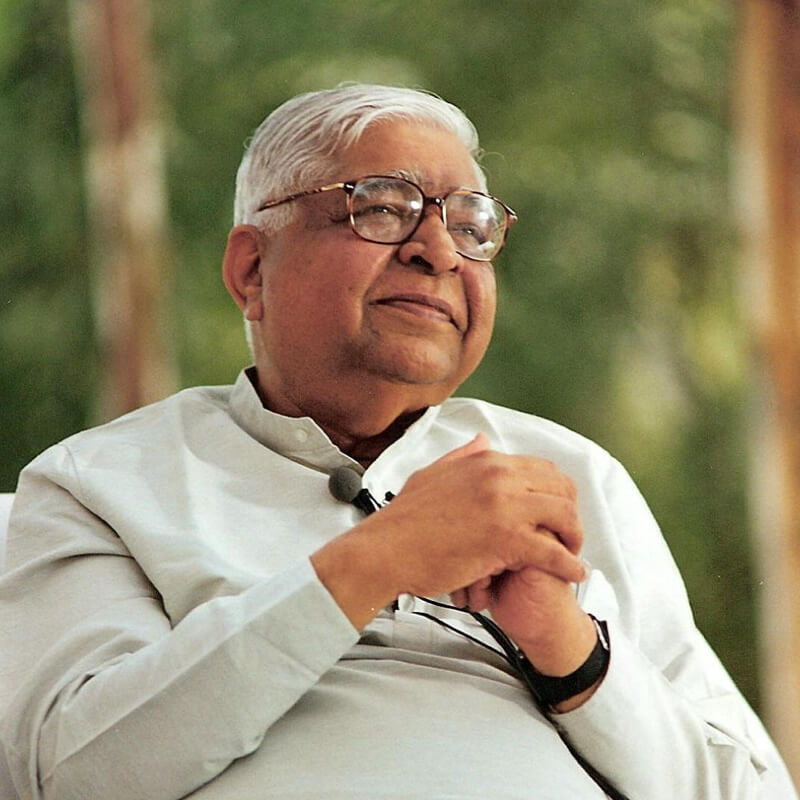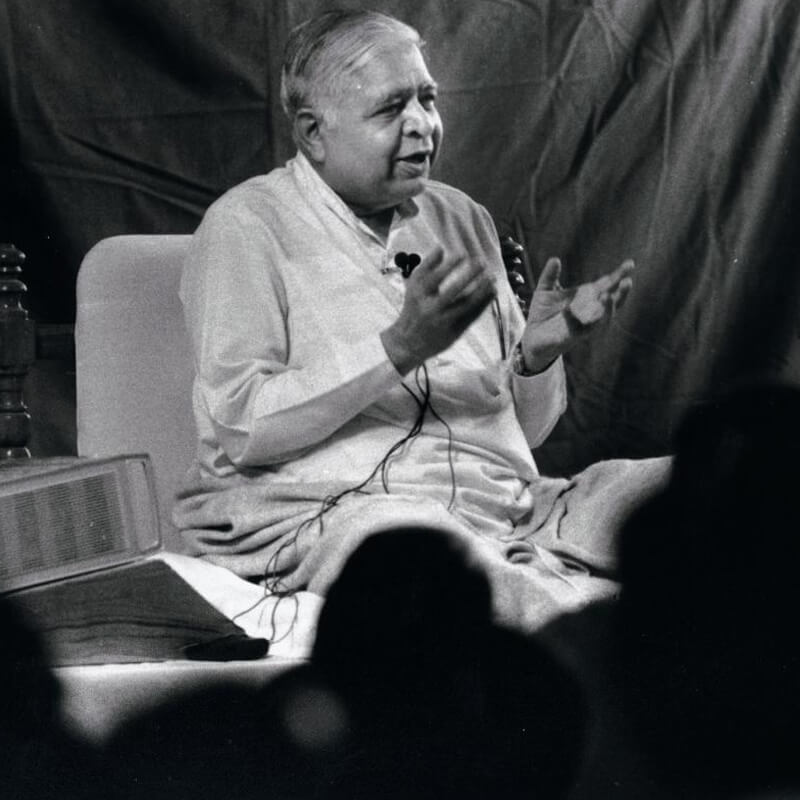Early years
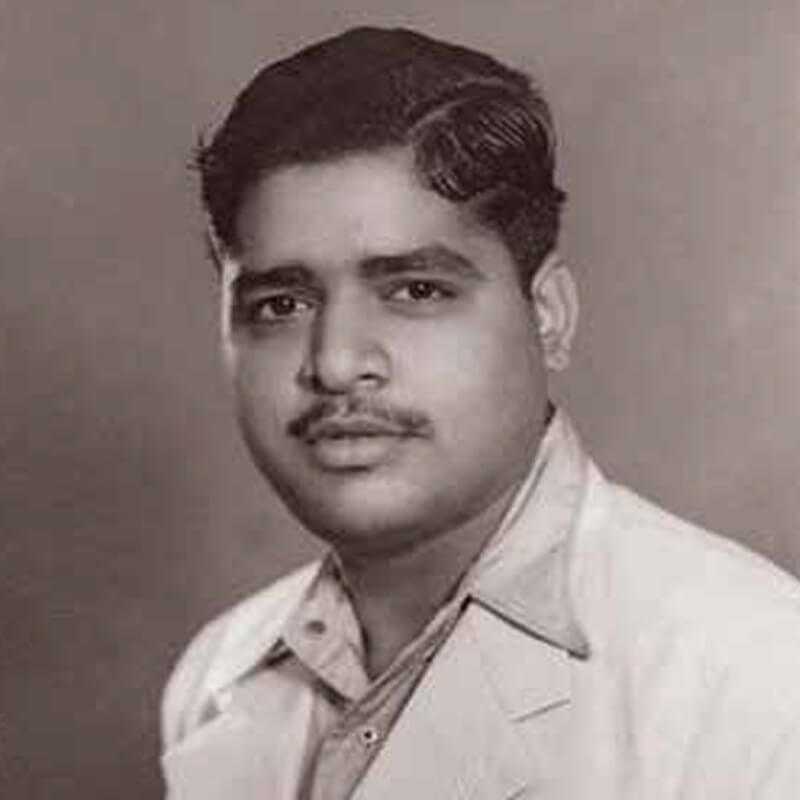
Mr. S. N. Goenka in his younger age
Goenkaji’s journey to deliver the message started in 1924 in Mandalay, the former royal capital of Myanmar. Less than 50 years before, a king still ruled there but the British had overrun the south. In their wake, a wave of immigrants entered the country from India, and one of them was Goenkaji’s grandfather. Like most of the newcomers, he was seeking his fortune. But he was an upright, honest man who was spiritually inclined; and though a Hindu, he quickly developed a deep respect for the Myanmar people and their traditions.
He conveyed that respect to his grandson. When he was a child, Goenkaji recalled, his grandfather took him to the famous Maha Myat Muni pagoda on the outskirts of Mandalay. There the old man sat with eyes closed, engaged in silent contemplation. Meanwhile the boy waited and watched patiently, absorbing the atmosphere of peace. In the child, respect turned to a profound love for the land of his birth. That love never wavered throughout his long life.
The boy grew up and graduated from high school at the top of his class. Although the idea of continuing his studies was attractive, he dutifully entered the family textile business. Then the cataclysm of the Second World War intervened. As the Japanese army invaded Myanmar in 1942, Goenkaji helped to lead a large group of family members overland through mountain and jungle to safety in India. They were more fortunate than the thousands of people who died on the arduous journey.
The family spent the war years in southern India, where a friend helped them to make a new start. After the Japanese defeat and withdrawal, they returned to Myanmar. By then Goenkaji was in his 20s. He quickly showed his extraordinary flair for business and became a leader of the Indian community. But as he has often recounted, wealth and prominence gave him no peace. Instead, mental tension triggered debilitating migraines that could be treated only with doses of highly addictive morphine. Goenkaji traveled to consult doctors in Japan, Europe and America; none of them could help.
Encounter with Vipassana
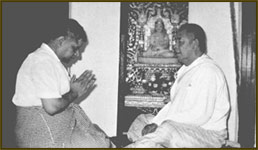
Mr. S. N. Goenka with Sayagyi U Ba Khin
It was then that a friend suggested going to the International Meditation Centre in northern Yangon, established a few years earlier by Sayagyi U Ba Khin. Born into a poor family, U Ba Khin had risen to become a top-level civil servant in the government of Myanmar, renowned for his integrity and effectiveness. At the same time he was a lay teacher of Vipassana, a technique of self-introspection that had been handed down from ancient times by the community of Buddhist monks in Myanmar.
Goenkaji took his friend’s suggestion and arranged a visit to see the meditation center and learn about what was taught there. As the young man approached, U Ba Khin recognized that here was someone who would be instrumental in the fulfillment of his mission as a Vipassana teacher.
Despite that, Sayagyi initially refused the visitor’s request to join a 10-day course. Goenkaji had frankly said that he was seeking relief from his migraines. “You are devaluing the technique if you come to cure a physical disease,” said U Ba Khin.
“Come to relieve your mind of tension and suffering; the physical benefits will automatically follow.”
Goenkaji agreed. After hesitating a few months, in 1955 he attended his first course. Though he wanted to run away on the second day, he persevered and found benefits he had never dreamed of. For the rest of his life, in his morning chanting he would express his deep gratitude to Sayagyi U Ba Khin.
In the following years, Goenkaji returned regularly to the International Meditation Centre and brought many family members and friends. Along with meditation, he pursued his business interests. But in 1963 came a turning point when the newly installed military government launched a program of nationalization. Overnight, Goenkaji lost the industries he had established and much of his fortune as well. His name also appeared on a list of capitalists targeted for execution. He accepted this situation smilingly and urged his former employees to keep working hard for the good of their country. He also composed the following verse:
If nature so wills…may every atom of my body be mingled with the dust of this sacred land. And if it is the will of nature for me to live longer, may every breath of my life flow with gratitude toward my motherland. (paraphrase of the original Rajasthani)
The Golden Years
In the end, the threat to his life was dropped and Goenkaji entered what he later called his golden years. Freed from business responsibilities, he spent more and more time with his teacher, immersing himself in the Dhamma, the teaching of liberation. For himself, he wanted nothing more than this. But U Ba Khin had other plans. He recalled the ancient prophecy that 2,500 years after the Buddha, the teaching would return from Myanmar to the land of its origin, India, and would spread from there around the world.
U Ba Khin’s dearest wish was to fulfill the prophecy by re-establishing the technique of Vipassana—the essence of the Buddha’s teaching—in India. Unfortunately, in the 1960s, the Government of Myanmar did not normally allow its nationals to go abroad. But since Goenkaji was of Indian descent, he might be given permission.
The opportunity to come to India for Goenkaji came in 1969. Goenkaji's parents had earlier left for India, and his mother had fallen sick. The government was willing to give him a passport valid for travel to India. Before Goenkaji left on his journey, U Ba Khin formally appointed him a teacher of Vipassana. On two courses for the Indian community in Myanmar, Goenkaji taught with his teacher by his side. The sites were chosen to provide the kind of conditions Goenkaji could expect to face in India. The first course was on the rooftop of a building in downtown Mandalay, located between two cinemas from which film music blared. The accommodation consisted of shelters made of bamboo matting. But this did not bother the students, and Goenkaji had the good fortune to receive on-the-job training from a master teacher.
With U Ba Khin at his elbow, for the first time, Goenkaji gave the discourses that were to become so familiar. Since the course participants were Indians, he spoke in Hindi. Sayagyi understood the language even though he did not speak it very well; every so often he would lean over and whisper to Goenkaji, "Now tell them about some of the disciples of the Buddha! Tell about Mother Visakha! Tell them about Angulimala!" And Goenkaji would drop whatever he was saying to do as his teacher directed. Later he would say that for him, giving one of his talks was like simply opening a faucet: without any effort, the words poured forth.
To India
In June 1969, Goenkaji boarded a plane from Yangon to Kolkata in India. Before they parted, his teacher had said to him, “You are not the one going—I am going, the Dhamma is going!” U Ba Khin himself could not leave Myanmar, but he was sending his pupil as his representative, as a Dhamma-duta (Pali, “emissary of the Dhamma”).
Goenkaji was very aware that this was a historic moment. Still, he clung to the thought that his stay in India would be brief and he would soon return to his revered teacher and beloved homeland. In fact, more than two decades were to before he again saw Myanmar. He arrived in a country where few people knew him and the teaching of the Buddha was held in low regard. The very word “Vipassana” had been forgotten. But with the help of his family, Goenkaji was soon conducting his first 10-day course in Mumbai from July 3 to 13, 1969. Among the participants were his parents and a handful of other people, including a woman from France. On the last day, she invited Goenkaji to her country; he told her to ask him again in 10 years.
The first course led to another, and another, and so the Wheel of Dhamma started turning in the land of its origin. The return to Myanmar would have to wait; there were people eager to learn Vipassana, and the Dhamma emissary could not refuse them. Goenkaji crisscrossed the country, often traveling third class in the crowded Indian trains. He had no old students to help him; instead he himself would assign rooms at the course site, and at meals he might sit with the students or serve the food. Often a tent functioned as the meditation hall. One night in Rajgir, a storm blew down the tent. But early next morning Goenkaji was on his seat, chanting to encourage the meditators.
The conditions were often rough; he had little money and less support; he was alone since his wife Illaichi (called by meditators “Mataji”) had remained behind in Myanmar at first. Yet he radiated joy—the joy of someone doing what he had been born to do.
In those first years, Goenkaji taught in Hindi only. He knew English but he had learned it for business purposes, and he thought his command of the language was inadequate for teaching Vipassana meditation. But as his reputation grew, non-Indians clamored to learn from him. In the late 1960s and early 1970s, there were many Westerners who had come to India in search of something they could not necessarily identify. Some of them urged Goenkaji to accept them in his courses, but he cited the language difficulty. Undeterred, the students then wrote to U Ba Khin in Myanmar. Soon a letter arrived from Yangon, ordering Goenkaji to offer courses in English. As always, he complied with his teacher’s wishes.
The first English course was in October 1970 in Dalhousie, a hill station in the Himalayas. There and later in Bodh Gaya, the site of the Buddha’s Enlightenment, a steady stream of young Westerners came to Goenkaji. Some of them were half-naked with the long, matted hair of Hindu ascetics. Others wore clothes more suited to a beach holiday. Most of the men were bearded; most of the women wore their hair long, flowing loose down their backs—not neatly braided, as proper Indian women wore theirs. To Goenkaji, their disheveled appearance made no difference; he shared the treasure of the Dhamma with all who came to him. Some of them joined a 10-day retreat and then were never seen again. Others followed Goenkaji across the country from course to course. Among them were people who went on to become well-known figures in different traditions. Among them also were people who now are the most senior teachers appointed by Goenkaji.
Soon, in coffee shops and restaurants that catered to the Western travelers, there were notices of Vipassana courses. Sometimes the teacher was referred to as “the singing guru,” because of Goenkaji’s rich and melodious voice. He used it to chant ancient compositions about the Buddha’s teaching and also for his own verses in Hindi and Rajasthani. In the hush of the meditation hall on a chilly morning or late in the evening, the sounds vibrated in the air, comforting, guiding and uplifting.
At the start of a course, he came in, sat down and waited quietly as the students found their places, arranged their cushions and fell silent. Then he opened his mouth, and within instants he had transformed the shabby rented room or drafty tent into a place outside time, where all were engaged in a fascinating exploration of inner truth. Hour after hour he would be there with the students. He did everything live—the chantings, the instructions throughout the day, the evening talks. The Dhamma poured out of him.
At 9:00 p.m. the daily program came to an end. After a long day that had started in the pre-dawn chill, the students were tired. But almost all of them remained in the hall; they did not want to miss the evening question period. People would line up or cluster near Goenkaji’s seat. Some questioners clearly wanted to challenge or debate with him. Others were genuinely confused or agitated. Some wanted confirmation that their own views were right. Others sought to prove him wrong. Goenkaji handled each one smilingly, tenderly, often laughing. Usually they would end up laughing with him. They might not even remember the words but they felt they had received the answer they needed.
At the end of a course, he gave a closing talk and meditated with the students for a few minutes. Then he walked out of the hall, continuing to chant in Hindi, “Saba ka Mangal ho—May all be happy, may all be happy.” Slowly the sound of his chanting faded away. The meditators were back in a shabby room somewhere in an Indian city, with street vendors crying their wares outside, dogs barking, friends or loved ones to meet, letters to read, trains to catch, plans to make. But for many of them, something had changed. Life would never be the same.
This is the only Repayment
Goenkaji kept reporting back to his teacher, and U Ba Khin took great pleasure in his letters. On one course there had been 37 students, and U Ba Khin was delighted: “Thirty-seven for the 37 factors of enlightenment! ” he said, referring to a term in the ancient Pali texts. He was still more pleased when Goenkaji reported that he had conducted a course for 100 students. Little did anyone imagine that some day that would be considered a small course.
Goenkaji was teaching at the Burmese Buddhist Vihara in Bodh Gaya in January 1971, when a telegram arrived to tell him that Sayagyi U Ba Khin had breathed his last. “The light has gone out,” he told the students. He keenly felt the loss. But he soon realized that he was aware of his teacher’s presence more strongly than ever. It was as if U Ba Khin had finally joined him in India.
What was there to do now except to carry on? His teacher had helped him when it seemed that there was no way out of his suffering. U Ba Khin had lovingly taught him Vipassana and trained him to teach. He had appointed Goenkaji a teacher, given him a mission and sent him on his way. Goenkaji would continue this mission to the end of his life. Every day of a course, he himself declared in his morning chanting:
From every pore flows gratitude, I can never repay this debt. Living the life of Dhamma, Serving suffering people, Sharing the happiness of Dhamma with all— This is the only repayment. So that is what he did. From the far south of India to the Himalayas, from the deserts of western Gujarat to the jungles of Bengal, Goenkaji continued on his way. The landscape changed, the faces changed, he himself would change and age, but the journey went on.
The Hill of Dhamma
In those first years, the courses were in temporary facilities—ashrams, viharas, churches, schools, pilgrims’ rest houses, hostels, sanatoriums, wherever space might be cheaply available. Each site worked but each had its drawbacks, and always there were the tasks of setting up at the start of a course and dismantling the site at the end. So the search started for a place specifically for Vipassana meditation, where courses would be offered year-round.
This is why, late in 1973 in the town of Igatpuri, a shopkeeper and a young municipal worker flagged down Goenkaji’s car on the way from a course in the town of Deolali to his home in Mumbai. They had found a few possible sites outside the town, and they begged Goenkaji to stop and have a look. He agreed reluctantly; his leg was in a cast from a recent fracture and he did not want to delay his return home.
The first two sites were obviously not appropriate, but there was one more to see. The car turned onto a rutted path, long out of use. It led up to a hill top dotted with huge mango trees that shadowed buildings dating from the days of the British Raj. Some of them were in poor repair, and goats wandered in and out of one bungalow. Behind loomed a bare mountainside. Goenkaji closed his eyes for a few moments. Then he said, “Yes, a suitable place.” At once the businessman traveling with him offered to buy the land. This was the start of what became known as Dhamma Giri, the Hill of Dhamma.
The center started modestly, with a handful of mainly Western meditators taking up residence. They wrote to Goenkaji, asking how they should spend their time. He replied, “Meditate, meditate, meditate. Clean yourselves and clean the meditation center. ” They set to work first with scrub brushes and water from the well. Once they had space, they devoted six to eight hours a day to the real task of sitting. Soon more people arrived, and then construction started. Dhamma Giri officially opened in October 1976.
It was an exciting moment but also a difficult one. As often happens, there had been cost overruns. The trust owed money to the contractors and was unable to pay them. For example, it lacked funds to pay for the new teacher’s residence. When Goenkaji found out, he refused to stay there. Instead, he and his wife Mataji moved into one of the dorms even though it had no plumbing. Bamboo matting screened a bathing enclosure for them next to the dormitory, and they used the common toilets like everyone else. This is what they did for the first half-year that Dhamma Giri was in operation, until the trust was able to pay the contractors.
Eventually more funds came in, more buildings sprang up and construction began of a pagoda like the one at U Ba Khin’s center in Yangon. A team of Western volunteers worked alongside the Indian laborers; the resident monk at the Burmese Vihara in Bodh Gaya came to help with the ornamental plastering. In early 1979, the pagoda officially opened. Present for the occasion were Sayama Daw Mya Thwin (who had assisted U Ba Khin with students at his center) and her husband U Chit Tin (who had worked for Sayagyi in the government).
Not long after came another breakthrough: Goenkaji boarded a plane to teach his first courses in the West. The woman who had invited him 10 years before remembered what he had said. Now she contacted him again, this time armed with an invitation from the French Federation of Yoga Teachers.
From India to the World
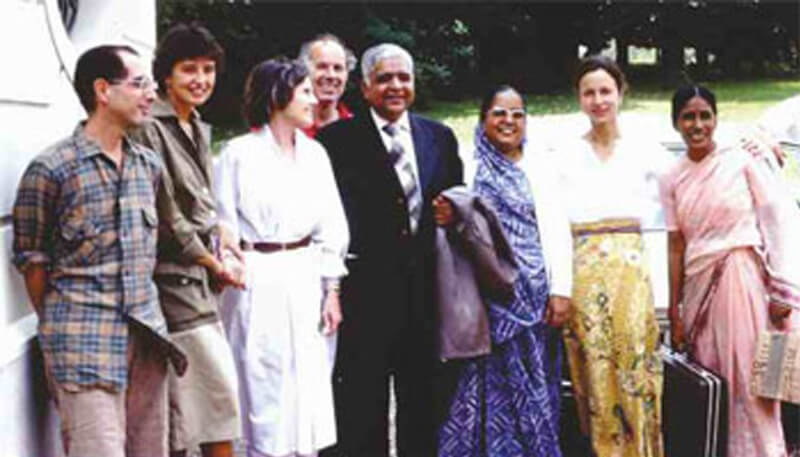
Mr. S. N. Goenka with Vipassana students
The time had ripened, Goenkaji felt. The ancient prophecy—that the Dhamma would return from Myanmar to India—had come to pass. But the prophecy also said that the Dhamma would spread from India around the world. The task remained to fulfill those words.
Before he could take up that task, Goenkaji needed to be able to travel to other countries. His passport from Myanmar was valid only for India. He had tried but failed to obtain further endorsements. Reluctantly, he realized he would have to change his citizenship and apply for an Indian passport. It was one more tie snapped with the country he still considered home, but as an emissary of the Dhamma he had to do it.
To his surprise, it was not so easy to become an Indian citizen and get a new passport. Reportedly, undercover agents came to Dhamma Giri to see what Goenkaji was doing. At every step, there were delays. But at the very last minute the roadblocks were removed, and Goenkaji and Mataji boarded the plane for Paris. It was almost exactly 10 years to the day since he had arrived in India from Myanmar.
That year Goenkaji taught two courses in France, followed by one in Canada and two in the U.K. Old students turned out in large numbers but there were also many people who had never before learned Vipassana. The following winter, some of them made the trip to Dhamma Giri. This became a pattern over the next two decades. During that time Goenkaji traveled yearly outside India. He visited not only Europe and North America but also Japan, Taiwan, Australia, New Zealand, Sri Lanka and Thailand … and eventually Myanmar, making his first return home in 1990. In all these places and more, centers sprang up dedicated to providing opportunities for learning and practicing Vipassana as taught by Goenkaji.
A New Focus
Goenkaji’s mission had taken a great leap forward, but now he faced a new problem: How could he serve the large numbers of people wanting to learn Vipassana? He taught alone, and even on a large course there was a limit to the number of students he could personally handle. There was only one answer. Starting in late 1981, he began training and appointing assistant teachers to conduct courses as his representatives, using recordings of his teachings. Fittingly, the very first 10-day course led by an assistant teacher took place at the Burmese Vihara in Bodh Gaya, the pilgrims’ guesthouse where Goenkaji himself had spent so much time. Within months, courses were being offered around the world. Today there are hundreds of assistant teachers conducting approximately 2,500 courses yearly for close to 150,000 people, at more than 150 permanent centers as well as in temporary facilities. Beginning in 1994, Goenkaji also appointed the most experienced assistants as full teachers; there are over 300 of them around the world, guiding the program of courses and the centers where they are offered.
The assistant teacher program enabled Goenkaji to focus on other large projects. He devoted more time to public speaking and appeared at many events, including the 2000 World Economic Forum in Davos, Switzerland. He founded the Vipassana Research Institute, which made the Pali-language Tipitaka—the oldest texts recording the teaching of the Buddha—widely available free of charge in the scripts of many different countries. He oversaw the development of an ongoing program of Vipassana courses for inmates at Delhi’s Tihar Prison and in many other correctional facilities, and he himself led the “Course for a Thousand” at Tihar in April 1994. He initiated a program of children’s courses. He wrote extensively on Vipassana and the teaching of the Buddha. And he inspired the construction of the Global Vipassana Pagoda on the outskirts of Mumbai. This slightly smaller replica of the Shwedagon Pagoda in Yangon is intended to attract many to learn about the teaching of the Buddha. It is also intended to be a lasting symbol of gratitude to Myanmar and to Sayagyi U Ba Khin for returning to India the gift of Vipassana.
As the years passed, honors and awards poured in. Goenkaji received the titles of “Ocean of Knowledge,” “Torchbearer of Dhamma,” “Master of Doctrine,” “Great Lay World Teacher of Vipassana,” and more. The governments of Myanmar and Sri Lanka invited him as a state guest, and in 2012, the Government of India conferred on him the Padma Bhushan (“Precious Lotus”), one of its highest civilian awards. All of these, Goenkaji insisted, were really honors for the Dhamma.
Last Years
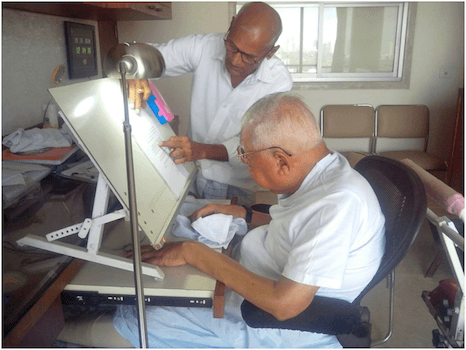
Serving Dhamma till very end of life
In the last years of his life, Goenkaji’s health was failing. He was confined to a wheelchair; that rich, thrilling voice became weak; speaking at length became difficult. But even as he experienced the sufferings of sickness and old age, he never set aside his task. To the best of his ability, he continued teaching the Dhamma and inspiring others to practice it.
As his fame increased, so did the respect in which he was held, and some began treating him like a traditional Indian guru—a role he had always rejected. When he appeared at the Global Pagoda, people swarmed to touch him as if he had some magic to offer them. This type of behavior dismayed him because it had nothing to do with his job as a Dhamma emissary. “I am just an average person,” he said in 2002 after giving a public talk in New York. In India, any teacher might be called “Guruji,” and some of Goenkaji’s students affectionately used that name for him. But if he had to use a title, he preferred the traditional Pali title of kalyana-mitta—“friend for one’s own welfare.”
He could not stop his students from photographing him, although he teased them as they aimed their cameras. “What,” he would say, “don’t you have enough pictures of me?” Beyond the joking, he refused to allow his photo to be displayed in the meditation hall or any other public place at Vipassana centers. When asked whether he was enlightened, he would reply, “As much as I have freed my mind of anger, hatred or ill will, to that extent I am enlightened.” He never claimed that he had achieved any special stage; at most, he would gently suggest that he was a few steps further along the path than those who had come to learn from him.
Many times people would thank him at the end of a course. His answer was always the same: “I am only an instrument. Thank Dhamma! And also thank yourself for working hard.”
In 2010, he said, “U Ba Khin is more important than the person who brought Dhamma. People have forgotten the names of the messengers sent by Emperor Ashoka long ago to bring Dhamma to different countries neighboring India. So today in this new era of the Buddha’s teaching, people must remember U Ba Khin, U Ba Khin.” He did not care whether people would remember him.
Nevertheless, for those who knew him, Goenkaji will remain unforgettable. Long ago, U Ba Khin said, “The time clock of Vipassana has now struck.” To many around the world, it was Satya Narayan Goenka who brought that message. For them, he was a living embodiment of the Dhamma—of wisdom, humility, compassion, selflessness and equanimity. He often talked about the sweetness of the Dhamma. His own sweetness will long remain, like the sound of his voice as he left the hall chanting, “May all be happy … be happy … be happy.”
The Bunch of Keys
Following is a story told by Goenkaji in the closing discourse of a 10-day course. It has been lightly edited for publication.
There is a story back in our country. In the last 10 days you have been hearing many stories. Perhaps your teacher is addicted to telling stories, and you are also getting addicted to listening to them. So before we part, one more story:
An old man in our country, a very rich man, became a widower. The old lady passed away. And in our country and perhaps here also, the housewife is the owner of everything—money, jewelry, property, everything. She keeps the bunch of keys. Now the old lady had gone. And it was a joint family. He had four sons and four daughters-in-law. He couldn’t give the bunch of keys to everyone, he had to choose one. So he called them and said, “I will examine you. This bunch of keys will be given to the one who gets the highest mark.”
What would he do to examine them? He gave five grains of corn to each daughter-in-law and said, “I will come after four years. You have to preserve these five grains. If you cannot take care of five grains, how can you take care of all the money, the jewelry, the granary, etcetera? This is your examination.” And the old man went away.
The eldest daughter-in-law thought, “The old man has gone crazy! For four years, why should I worry about those valueless five grains? I’d better throw them away. When he comes back, I’ll take another five grains from the granary and give them to him saying, ‘Take your five grains.’” She threw the grains away.
The second one thought, “Yes, it is not good to worry about these five grains for four years. But who knows, these very five grains may have some wonderful, magical, miraculous powers. And after four years he will say, ‘All right, eat it!’ And when I eat it, I will get this or that supernatural power. I should not throw the grains away. I’d better eat them now. When he comes back, I’ll give him another five grains.” And she ate the grains up.
The third one was very eager to get the bunch of keys. She kept those five grains in her room where she had the statues of her deities. And every day when she went to inspect the statues, she inspected the five grains also. She took care of the five grains all the four years.
The fourth daughter-in-law took the five grains, cleared the land behind the house and planted them. When the time ripened, five plants grew with a hundred grains each. Next season, all those five hundred grains were planted. And the next season, all the grains were planted. In four years, there were tons of grains.
When the old man came back, each daughter-in-law had her own story. When he questioned the fourth one, she said, “They have increased, sir. The storerooms are full. Bring some laborers to take the grains.”
The old man was very happy. This daughter had not only preserved the five grains; she had multiplied them.
This old man has also given you five grains of Dhamma. Not only preserve but multiply them. And I won’t take the bunch of keys away with me; it remains with you. As you keep on multiplying Dhamma, you are able to open the gateway of the kingdom of heaven within, and enjoy. You can open the gateway of the brahmanic plane within, and enjoy. The gateway of nibbanic peace within, and enjoy.
Keep growing in Dhamma, keep growing in Dhamma. Not to oblige anybody else—for your own good, for your own benefit. And also for the good and benefit of so many others, so many others.
(The article "The messenger of inner peace" was prepared by Bill Hart, one of the teachers appointed by S.N. Goenka and author of the book The Art of Living. Its Hindi translation has been done by VRI,Dhamma Giri and it is being published in three parts in Vipassana News Letter with photographs.)
Questions and Answers
If walking on this path one can become an arahant, then what stage have you reached?
Goenkaji: I have not reached the stage of an arahant. What stage I have reached I cannot say, there is no meaning in my saying. It is for you to judge. If all my behaviour in life is full of impurity, then I have not reached anywhere. But if you find something good in me, then certainly I have developed on this path.
Could you please explain the meaning of ‘kalyānmitta’?
Goenkaji: ‘Kalyān’ means welfare, and ‘mitta’ means friend. One who is a friend in our welfare is therefore a ‘kalyānamitta’. ‘Pāpa’ means immoral, blameworthy acts. Hence one who leads us on an immoral, unwholesome path would be a ‘pāpamitta’, and one who leads us to our well-being is a ‘kalyānamitta’
Describe a typical day in your everyday life
Goenkaji: This is what I do: I keep practicing Vipassana. I keep teaching Vipassana. I make myself happy, I make others happy.
I would like to know what was the defining moment in your life? The point where and when you felt that you had fulfilled your life’s purpose?
Goenkaji - The moment I received Vipassana. When I received Vipassana on the fourth day in the camp that I was attending, it felt as if the insight of wisdom had suddenly awakened. Until that time all the spiritual talks I had heard remained at the mere intellectual level and I had deluded myself into thinking that I was gradually becoming detached and equanimous. However, the practice of Vipassana revealed true wisdom to me. Wisdom or knowledge spoken by someone else belongs to that person. It could not be my wisdom as I had not experienced it. My wisdom was awakened when I found the pathway of how to get established in wisdom and experience it for myself. That was the golden opportunity for me.
"You have to work out your own salvation"-interview with S. N. Goenka
Mr. S. N. Goenka spoke to The Indian Express Editor-in-Chief Shekhar Gupta on NDTV's Walk the Talk on how Vipassana changed him and how he brought vipassana back to the country of its origin.
S. N. Goenka-The Radiant Journey
Param Pujya Shri Satya Narayan Goenka, Global Acharya of Vipassana Meditation, passed away peacefully at the ripe age of 90 at his residence on Sunday, 29th September, 2013 at 10:40 PM. The following video contains his funeral procession.

